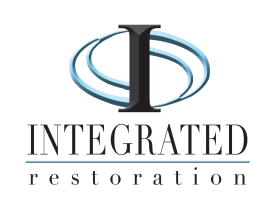Summer Storms & Water Damage: What Cleveland Property Owners Should Know
Summer in Northeast Ohio means longer days, warmer weather—and some of the year’s most intense storms. If you’ve lived through a Cleveland summer, you know how quickly heavy rain, wind, and flooding can put your property at risk. Water damage isn’t just a winter problem from frozen pipes—it’s a year-round threat.
Whether you’re a homeowner with a leaky basement or a facility manager dealing with flood-prone loading docks, here’s what to know about summer water damage and how to protect your property.
How Summer Storms Cause Water Damage
Storm-related water damage can happen fast—and often when you least expect it. During summer, we see an increase in:
Flash Flooding from sudden downpours
Roof Leaks made worse by high winds and clogged gutters
Sump Pump Failures during prolonged rain
Foundation Seepage from saturated soil
Overflowing Gutters or Downspouts that push water into siding or basements
And because the weather is hot and humid, any lingering moisture can create the perfect environment for mold and mildew to form—fast.
Common Signs of Storm Water Damage
Not all damage is visible right away. Keep an eye out for:
Musty smells or increased humidity indoors
Water spots on ceilings or walls
Damp carpets or flooring that feels soft underfoot
Peeling paint or bubbling drywall
Pooled water near basement walls or foundation cracks
These are red flags that require quick attention to avoid long-term structural or health issues.
How Water Damage Impacts Homes vs. Commercial Buildings
While summer storms affect all properties, the impact and risks vary:
For Homeowners
Basements are especially prone to flooding from poor drainage or overwhelmed sump pumps.
Attic leaks from damaged roofing or missing shingles can go unnoticed until mold forms.
HVAC systems in crawlspaces or basements may be affected by standing water or humidity.
For Businesses & Commercial Facilities
Water damage can disrupt operations and cause downtime.
Inventory, equipment, and IT systems are vulnerable to even small leaks.
Flat commercial roofs are more prone to pooling and drainage issues.
Insurance and compliance documentation requirements can be more complex.
No matter your property type, our crew understands the urgency—and knows how to tailor the response for your space.
Why Fast Action Matters
Mold can begin growing within 24–48 hours after water enters your home or business. Acting quickly isn’t just about cleanup—it’s about protecting your property and preventing secondary damage.
At Integrated Restoration, we use industry-standard tools and moisture mapping to detect hidden damage and dry out affected areas thoroughly. Our certified team follows IICRC best practices to ensure the job is done right—from water extraction and drying to mold prevention and reconstruction.
What to Do If You Have Water Damage
Stay safe. If water is near electrical outlets or your HVAC system, evacuate and call for professional help.
Stop the source. If possible, shut off the water or redirect flow away from your property.
Document everything. Take photos and note the time damage occurred.
Call Integrated Restoration. The sooner we arrive, the faster we can help mitigate damage and support your insurance claim.
When Can You Handle Water Damage Yourself?
Not all water damage is the same. Minor water issues—like a small leak from an appliance caught early—can often be handled with fans and towels.
But in these cases, it’s best to call in a professional:
You suspect hidden moisture behind walls or under flooring
The source is sewage or contaminated water
There’s visible mold or a strong musty smell
The water has affected electrical systems or insulation
You’re unsure what areas are impacted
If you're unsure, check out our blog on spotting water leaks for more signs of deeper damage.
How We Help Cleveland Property Owners Recover
Whether you're dealing with basement flooding, roof leaks, or sump pump overflow, our team is here 24/7. We’re not just a cleanup crew—we’re a full-service restoration partner with:
Local crews who understand the unique challenges of Cleveland’s summer storms
Experience with both residential water damage restoration and commercial water damage repair
Direct support with insurance documentation, estimates, and adjuster communication
Advanced tools like HEPA dehumidifiers and moisture meters
Workmanship we stand behind, every time
With years of experience helping Cleveland-area homes and businesses recover from summer storm damage, we know how to act fast and get your space back to normal.

